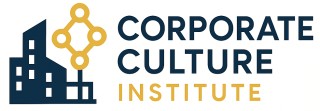
Defining Sprint Review and Sprint Retrospective
Overview of Sprint Review and Sprint Retrospective
Understanding the core elements of agile frameworks like Scrum is crucial for teams seeking to optimize their development process. Among these practices, Sprint Review and Sprint Retrospective meetings hold significant importance. Despite occasional confusion, these two events serve distinct purposes within a sprint framework. The Sprint Review is primarily focused on inspecting the product developed during the sprint. It involves the presentation of completed work to stakeholders, allowing them to provide valuable feedback. This meeting is crucial for aligning the product with stakeholders' expectations and refining the product backlog based on review outcomes. In contrast, the Sprint Retrospective serves as an internal team-focused event aimed at improving the process. The retrospectives allow team members to reflect on the sprint’s effectiveness and identify adjustments for the next sprint. This is key in fostering a culture of continuous improvement within the Scrum team. Understanding these distinctions helps teams address specific areas: while the review emphasizes product feedback, retrospectives focus on process enhancement. This enables teams to better allocate their time and efforts in meetings, enhancing overall productivity and team cohesion. For more on how these practices fit into the broader scope of corporate culture, consider exploring the dynamics of dotted line reporting in corporate environments.Key Differences Between Sprint Review and Sprint Retrospective
Understanding the Distinct Roles
In the realm of agile project management, the sprint review and sprint retrospective serve distinct purposes, each contributing uniquely to the development process. While both are integral to the scrum framework, they cater to different aspects of the sprint cycle and involve varying participants and objectives.
Focus and Objectives
The primary focus of a sprint review is on the product itself. This meeting is designed to showcase the work completed during the sprint to stakeholders, including the product owner and other interested parties. The goal is to gather feedback on the product increment and discuss any adjustments needed for the product backlog. In contrast, the sprint retrospective is a more introspective meeting, concentrating on the team’s processes and interactions. It aims to identify areas for improvement in the team’s workflow and collaboration, ensuring that the team continuously evolves and enhances its efficiency.
Participants and Dynamics
During a sprint review, the scrum team, including the development team, scrum master, and product owner, engages with stakeholders to present the completed user stories. This interaction is crucial for aligning the product with stakeholder expectations and refining the project’s direction. On the other hand, the sprint retrospective is an internal meeting involving only the scrum team. This setting allows team members to openly discuss what went well, what didn’t, and how they can improve their processes in future sprints.
Timing and Frequency
Both meetings occur at the end of a sprint, but their timing and frequency can vary. The sprint review typically takes place before the sprint retrospective, as it deals with the external evaluation of the product. The retrospective follows, providing the team with an opportunity to reflect on their work and make necessary adjustments before the next sprint planning session. This sequence ensures that the team is prepared to implement improvements in the upcoming sprint.
Outcome and Impact
The outcomes of these meetings differ significantly. A successful sprint review results in a refined product backlog and a clear understanding of stakeholder expectations. Conversely, a productive sprint retrospective leads to actionable insights for improving team dynamics and processes. By addressing both product and process, these meetings collectively enhance the overall project management strategy.
For more insights on how these meetings integrate into broader corporate practices, you can explore streamlining HR document management for a cohesive corporate culture.
The Role of Feedback in Sprint Review
Emphasizing the Impact of Feedback
In the realm of agile project management and scrum methodologies, feedback gathered during sprint reviews plays a crucial role. Held at the end of each sprint, the review meeting offers product owners, stakeholders, and the entire scrum team a platform to collaborate. Here, they assess the product increment and evaluate whether it aligns with the goals set during sprint planning. Feedback is vital as it provides insights into the product development process, helping identify areas of improvement and success. During these review meetings, team members present user stories and demonstrate their contributions, offering stakeholders the chance to provide their input. This leads to a better understanding of the product's real-world application and potential adjustments. Additionally, sprint reviews create a unique opportunity for scrum teams to receive outside perspectives, which can sometimes highlight hidden challenges or spark innovative ideas. The inclusion of diverse viewpoints ensures that the product backlog remains dynamic and adaptive to change. The focus on feedback during these reviews helps maintain a continuous improvement loop, fostering an open communication channel between the scrum team and its stakeholders. By actively engaging in this process, everyone involved becomes more aligned with the project's objectives, ultimately enhancing the product and driving successful project management. Integrating feedback effectively into corporate culture is essential, especially for companies looking to harness the benefits of agile methodologies. For a deeper exploration of how feedback and communication influence corporate environments, check out how exploring the Society for Human Resource Management's annual conference can provide additional insights.Improving Processes with Sprint Retrospective
Leveraging the Retrospective for Process Optimization
Sprint retrospectives hold immense value in the agile framework, offering the scrum team a structured environment to reflect on their work. During these retrospective meetings, team members gather to discuss the processes that facilitated or hindered their sprint goals. The primary objective is to identify actionable steps that can be taken to refine workflows and enhance efficiency in future sprints. One significant advantage of the retrospective meeting is the focus it brings to continuous improvement. The development team shares insights and experiences related to the recent sprint, promoting an atmosphere of openness and learning. By spotlighting both successes and challenges faced during the project, the team gains a clearer understanding of what changes are necessary. Here are some strategies to consider for maximizing the effectiveness of sprint retrospectives:- Encourage Honest Feedback: Create a safe and inclusive space where all team members feel comfortable voicing their opinions, recognizing that candid discussions are vital for identifying both strengths and weaknesses.
- Set Clear Objectives: Define what the team aims to achieve in each retrospective. This could range from addressing impediments to brainstorming innovative solutions for persistent problems in the development process.
- Involve Stakeholders Sparingly: While the presence of stakeholders is crucial in sprint reviews to discuss the product development and gather user feedback, in retrospectives it's more beneficial to limit the attendees to the scrum team to maintain focus on internal processes.
- Review and Act on Insights: Create a tangible action plan based on the feedback and discussions. Assign responsibilities to the scrum master, product owner, or other relevant team members, ensuring that identified improvements are implemented and tracked over time.
Common Challenges and Solutions
Facing Hurdles and Resolving Issues
In the dynamic world of agile methodologies, the proper conduct of sprint retrospectives can present a range of challenges. Understanding and addressing these issues is crucial for the scrum team to leverage the full potential of these meetings.- Overcoming Participation Hesitation: Sometimes, team members may be reluctant to actively engage or share honest feedback during a retrospective meeting. To address this, the scrum master should create a safe space that encourages open communication. This could involve setting clear guidelines on respectful dialogue and ensuring all voices are heard.
- Time Management Concerns: Another common issue faced during retrospective sprints is poor time management. It’s essential to allocate adequate time for each topic on the agenda without digressing into unrelated discussions. Setting a well-defined schedule ahead of the meeting is crucial, and the product owner, along with other stakeholders, should be invited to review it.
- Lack of Constructive Feedback: An effective retrospective should be focused on constructive feedback that helps the development team improve its processes. However, teams sometimes struggle with vague or unfocused evaluation. A possible solution is establishing a culture of clear, actionable insights in sprint reviews and retrospectives alike, which can help in refining processes and enhancing team cohesion.
- Resistance to Change: Implementing new strategies or workflow alterations post-retrospective can be met with resistance. The scrum master can address this by clearly communicating the benefits of proposed changes, aligning them with the organization's goals, and engaging all team members in the decision-making process.
Integrating Sprint Ceremonies into Corporate Culture
Integrating Sprint Ceremonies for a Cohesive Corporate Culture
Incorporating sprint reviews and retrospectives into the corporate culture requires strategic effort and commitment from both the management and scrum teams. Creating an environment where feedback is valued and continuous improvement is a norm contributes significantly to agile success. Here are a few tips to seamlessly weave these ceremonies into the fabric of your corporate culture:- Build a Feedback Culture: Establishing a feedback-friendly environment is crucial for productive sprint meetings. Encourage open communication where team members and stakeholders are comfortable sharing insights on the product and process improvements. This approach fosters transparency and trust across the organization's hierarchy.
- Align with Broader Business Goals: Ensure that the outcomes from sprint reviews and retrospectives align with the company’s strategic objectives. By linking these ceremonies to overall business goals, teams can see the direct impact of their efforts on the organization, driving motivation and commitment.
- Emphasize Leadership Support: Advocate for strong leadership involvement, particularly from scrum masters and product owners, to reinforce the importance of these ceremonies. Leaders play a vital role in guiding teams and addressing logistical barriers during sprint planning and retrospective meetings, ensuring they are efficiently integrated into the team's work cycle.
- Focus on Time Management: Efficient use of time during these ceremonies is imperative. Implement strategies to keep discussions focused and relevant, helping teams stay on track and respect everyone's time. A well-structured agenda can prevent meetings from derailing and ensure productive outcomes.
- Foster Continuous Improvement: Encourage teams to take actionable steps after each retrospective, focusing on both process improvements and user stories enhancements. This iterative mindset instills a culture of continuous learning and development within the team.













